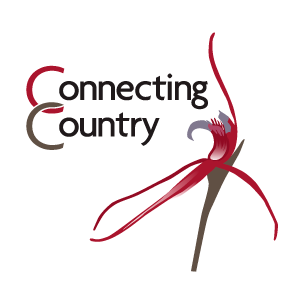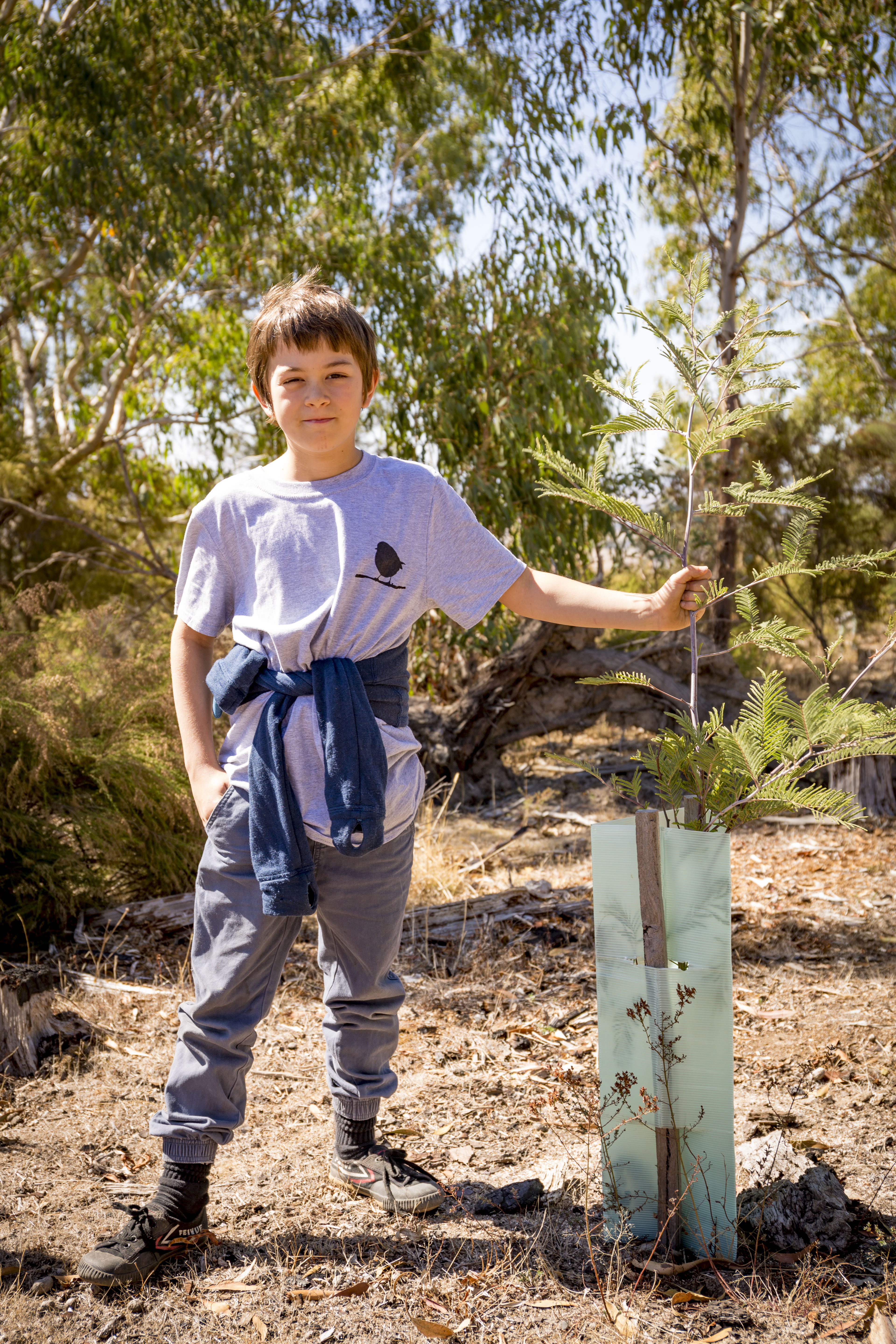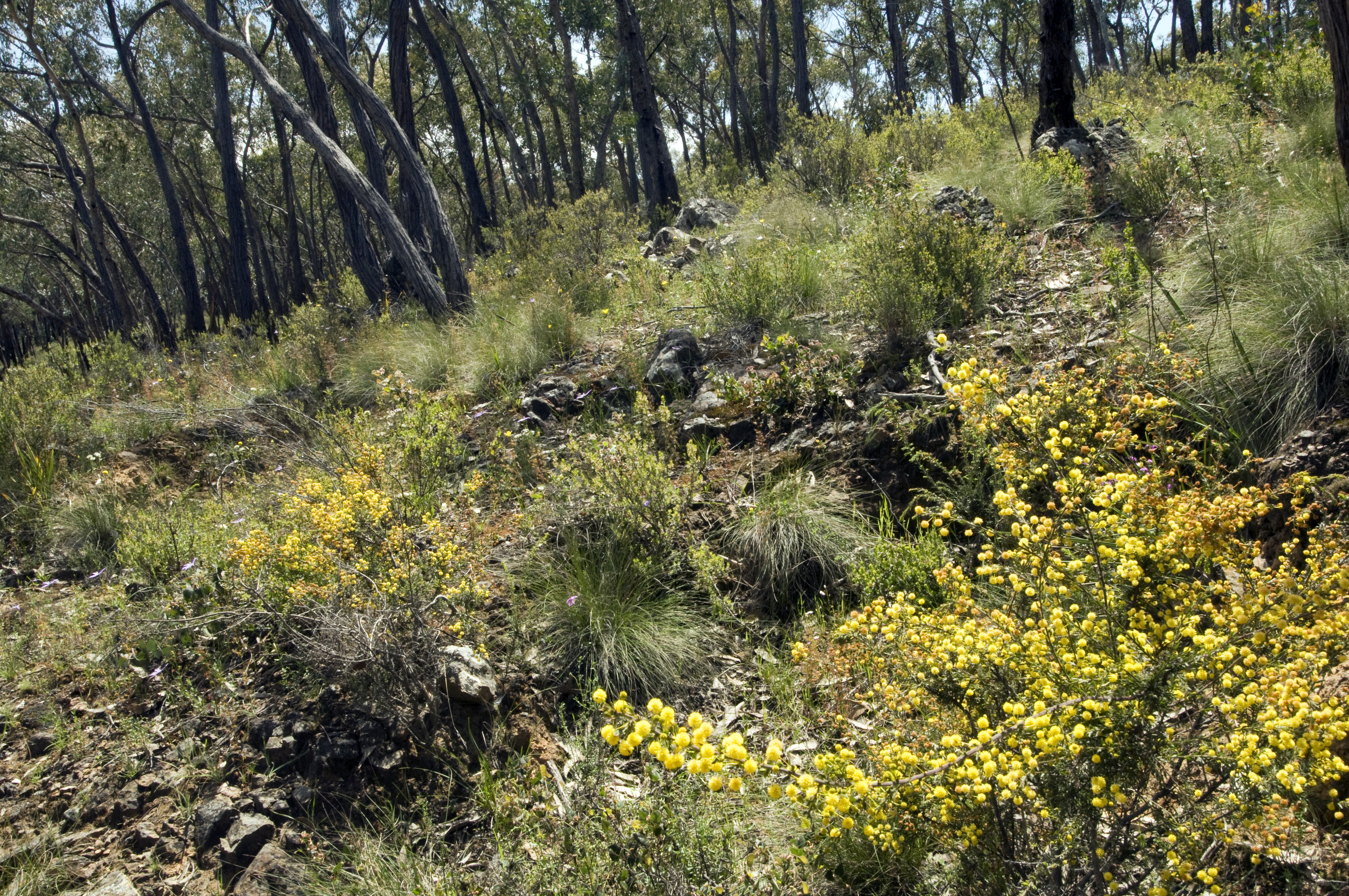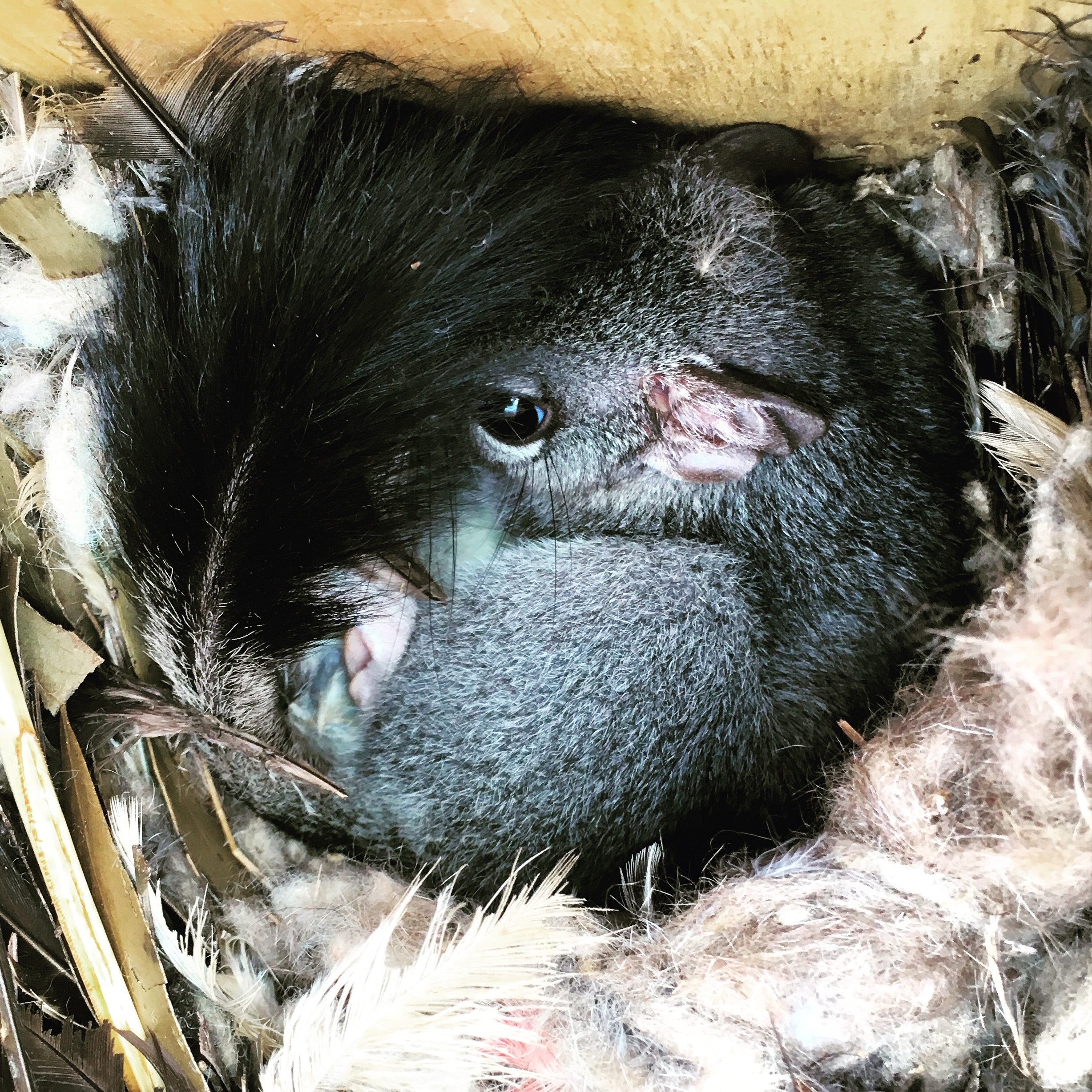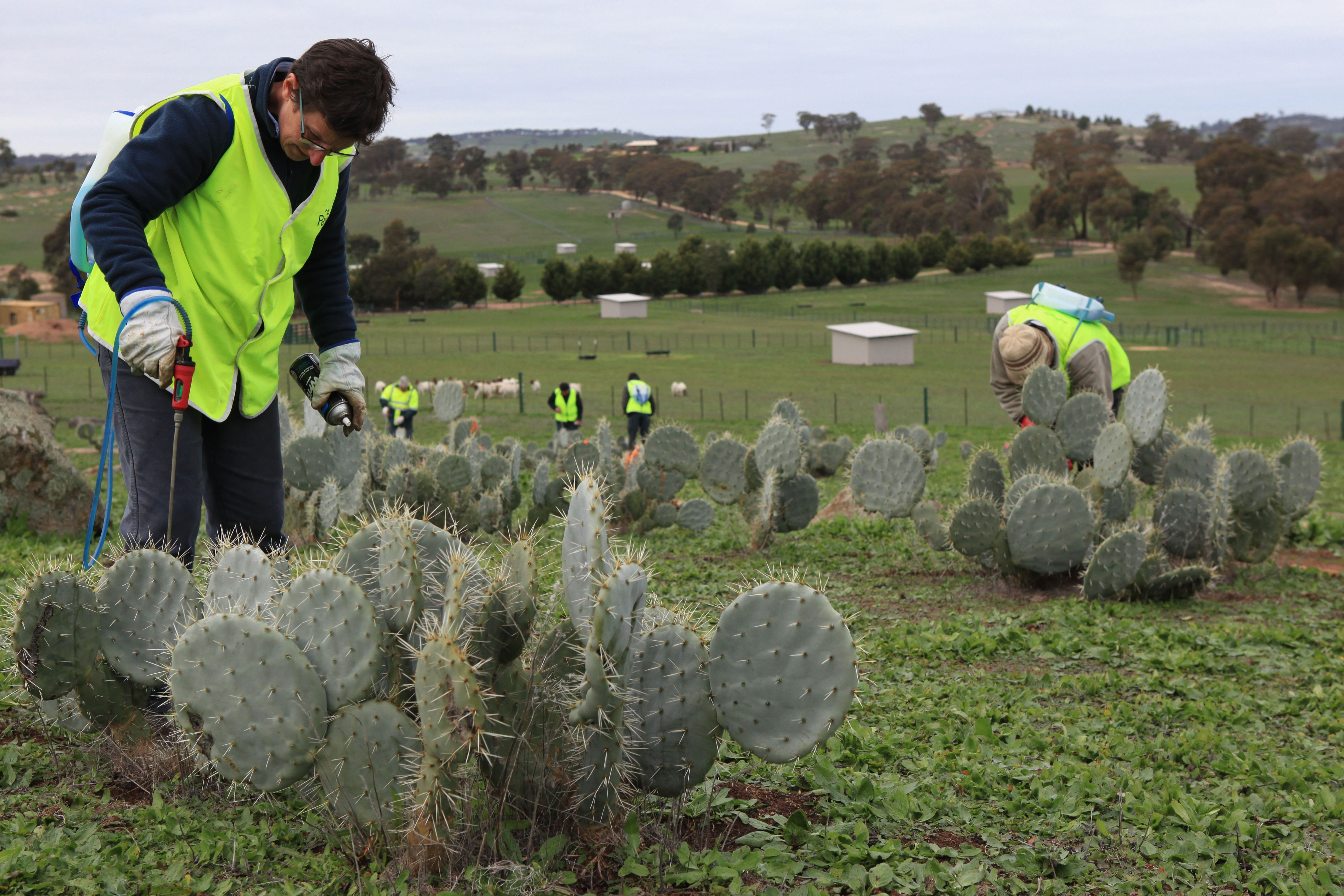Photo competition, an opportunity to put local Eucalypts on the cover
Posted on 6 June, 2019 by Jacqui
A nation-wide photography competition run by the Threatened Species Recovery Hub is now open, offering an opportunity for anyone to submit photos capturing the beauty of Mount Alexander region’s eucalypts.
Yellow Gum (Eucalyptus leucoxylon) is one of our local eucalypts worthy of a photo. Mass flowering of this species is still continuing across our region, and it makes a stunning specimen to photograph for its smooth yellowish bark (sometimes rough at the base) and well formed shapely buds in threes.
The competition is being held to celebrate Australian eucalypts, which include the genera Eucalyptus, Angophora and Corymbia. It also marks a significant milestone in eucalypt conservation. A nation-wide assessment of the conservation status of Australian eucalypts is being completed to inform us about species at risk through a national conservation action plan for eucalypts.
Photos of high resolution (300 DPI 1-5 MB) can be submitted in three categories:
- Trees.
- Flowers and nuts.
- Features (bark, foliage or anything else of artistic merit).
Prizes
Winning photographs will be included in the national conservation action plan for eucalypts and social media. Winners of each category will also receive a prize pack of the following books:
- Eucalyptus, the award winning novel by Murray Bail.
- Eucalyptus: An Illustrated Guide to Identification by Ian Brooker and David Kleinig.

A river red gum (Eucalyptus camaldulensis) at Simpsons Gap, Northern Territory (photo by Jaana Dielenberg)
Photographs
To submit photos include the following information:
- Photographer name.
- Location photo was taken.
- What species you think it is, if known.
- Supplementary photos of buds and nuts (even if they are scraps from beneath the tree) and a general location so the identity of the species can be confirmed.
If you have multiple images consider supplying them in dropbox or another file sharing application.
You will also need to give consent to the Threatened Species Recovery Hub and the University of Queensland to use your photos in the national action plan and other materials used to promote this project.
To submit entries and get more information:
- Visit: Threatened Species Hub Eucalypt Competition
- Email: Teghan Collingwood (t.collingwood@uq.edu.au)
Competition closes: Monday 22 July 2019, with winners notified in late July.
Help support Connecting Country
Posted on 6 June, 2019 by Frances
Community are at the heart of all we do. We support Landcarers and help landholders revegetate and protect bushland. We monitor local plants and animals, and engage people to raise awareness about our special local environment. We empower people to take action and connect with their landscape.
In recent years, Connecting Country has adapted to an environment where less funding is available. We draw on a patchwork of grants to achieve a lot with a little. This isn’t always easy. We wouldn’t exist without our generous supporters and volunteers, and are constantly on the lookout for ways to make our limited resources go further.
Connecting Country chooses to make our membership free, because we welcome anyone and everyone to join us! However, if you’ve enjoyed being part of our story, or would like to further support our work, you may like to make a financial contribution.
With the end of the financial year approaching fast, it’s a good time for donations. Connecting Country is a registered charity with Deductible Gift Recipient Status. Donations of $2 and over are tax deductible.
The easiest way to donate is online via Givenow: click here
For other ways to donate: click here
Your gift will help safeguard the future of Connecting Country, directly support practical on-ground actions for our local environment, and contribute to protecting and restoring the local landscape we all love.
To each of the many people who have already contributed, we express our deepest thanks.
Sights and sounds from the Camp Out 2019
Posted on 6 June, 2019 by Asha
If you couldn’t make it to the Camp Out on the Mount 2019, we now have available an audio recording of the panel and song from the Sunday morning. Or you may have come along but enjoyed it so much you’d like to listen again! Many thanks to Leonie van Eyk and the Little Habitat Heroes for recording this and putting it together to be shared.
The audio features a Welcome to Country from Uncle Michael Bourke, followed by further welcomes from Connecting Country, Little Habitat Heroes, Harcourt Valley Landcare, and Maree Edwards MP. Local legend George Milford then facilitates a discussion between local experts, including Terri Williams (Bendigo TAFE), Michael Bourke (Dja Dja Wurrung Clans Aboriginal Corporation), Ian Braybrook and Marilyn Bennet (authors of ‘Sarah’s search – a silk odyssey’). They speak about the values of the mount from the perspectives of the environment, culture, and heritage. It finishes with local musician Eva Popov singing her song, ‘Seeds that grow’.
Click here to listen, or click the ‘play’ button below.
Also, please enjoy these lovely photos of some of the kids who went down to the revegetated area at Old Silk Worm Farm after the panel. Leonie and the Little Habitat Heroes helped them find new plants that had grown to the same height as them, to take their photo with!
Birdata workshop – 23 June 2019
Posted on 6 June, 2019 by Jess
BirdLife Castlemaine District and Connecting Country are partnering to bring you a new workshop on how to use the Birdata app to record bird surveys on your smartphone (both Android and iPhone). No experience is required. We’ll provide training on how to do a 20 minute – 2 hectare search using your phone.
Surveys can also be recorded on paper if necessary. However, if you have a smartphone, using the Birdata app is quick and easy, and saves time on data entry.
Here’s what we’ll cover at the workshop:
- What is a 2 ha area count and how do you do it.
- How to use Birdata and record a survey.
- Substantial afternoon tea!
- Putting theory into practice by completing a survey in the field.
When: Sunday 23 June 2019 at 1:00 pm
Where: Tea Room, Castlemaine Botanical Gardens, Downes Rd, Castlemaine VIC
Registration: Please email castlemaine@birdlife.org.au to register. That way we can provide plenty of afternoon tea and Birdata trainers.
Victorian Junior Landcare biodiversity grants
Posted on 6 June, 2019 by Asha
Victorian schools and other groups with young Victorians that want to work on a biodiversity project can apply for the 2019 Victorian Junior Landcare and Biodiversity Grants. These grants offer funding for projects that involve and educate young Victorians in valuing and actively caring for our natural environment. For further information: click here
Who can apply: Schools, kindergartens, childcare centres, Scouts, Girl Guides and youth groups.
Grant funding: Up to $5,000 is available for projects comprising direct action (i.e., projects with an on-ground component), indirect action (i.e., projects with an environmental education component), or a mix of both.
Type of projects supported by this program:
- On-ground projects that restore, protect, enhance, or develop habitat for native flora and fauna, and/or address threats to biodiversity, e.g., weed invasion, habitat loss.
- Projects that increase opportunities for children to connect with their natural environment, e.g., a school excursion to Healesville Sanctuary.
- Projects that educate and raise awareness among young people of the benefits and importance of biodiversity and a healthy environment, and/or how they can contribute to environmental improvement.
Grant guidelines: click here
Frequently asked questions: click here
How to apply: To access the application form log into the Landcare Australia Communities portal (or register if you haven’t applied for a Landcare Australia grant before). Click on ‘2019 Victorian Junior Landcare and Biodiversity Grants’ and then click ‘create application’. You can save your application as a draft and log back in to finish it later.
Applications close: 3.00 pm on Friday 21 June 2019
Birdlife Castlemaine Birdwalk at Harcourt – 1 June 2019
Posted on 30 May, 2019 by Ivan
Birdlife Castlemaine has provided details for their monthly bird walk, this weekend at Harcourt. If you have questions about the walks program, you can email them at: castlemaine@birdlife.org.au
June Bird Walk
Saturday 1 June – Barkers Creek Reservoir, Harcourt VIC
We’ll start on the eastern side, hoping for reasonable sightings of bush birds in the woodlands, where we will do a 20 minute 2 hectare survey, then walk across to look for the water birds and raptors (there were three Whistling Kites there recently). If you have a spotting scope, please bring it. We’ll then drive to the parking area on the west side, off McIvor Rd. Damian Kelly’s ‘Castlemaine Bird Walks’ book has further details and a useful map (see page 62). Bring morning tea and a stool or chair. There are new information boards near the car park about the Coliban water supply system and the use of canoes and kayaks on the reservoir.
Location and directions: Travelling from Castlemaine, turn right off the Old Calder Highway in Harcourt, and follow Market St towards Mt Alexander. At the junction with Reservoir Rd follow the bitumen as it turns left, and continue to T-junction at McIvor Rd. Turn right, then left onto North Harcourt Rd and park on the left, just past the Harcourt-Sutton Grange Rd intersection.
Time: Meet at Barkers Creek Reservoir at 8:45 am, or to carpool from Castlemaine meet at 8:30am outside Castlemaine Community House (formerly Continuing Ed), Templeton St, Castlemaine VIC.
Important information about walks: Bring water, snacks, binoculars, hat, sunscreen, sturdy shoes, long pants during snake season, and other weather-appropriate gear.
Walks will be cancelled if the temperature is forecast to be 35 degrees or more during the walk period, severe weather warnings are forecast, and/or if the day has been declared a Total Fire Ban.
Questions?: If you have questions about our walks program, you can email Birdlife Castlemaine at castlemaine@birdlife.org.au, or call Judy Hopley (0425 768 559) or Asha Bannon (0418 428 721).
Connecting Country membership renewal for 2019-20 – now available online
Posted on 30 May, 2019 by Jacqui
Connecting Country’s membership renewal drive for the 2019-20 is well underway, and we are happy to announce that it is simpler than ever. By following this secure link, you can now renew your membership online in a couple of minutes.
Connecting Country membership is free and has lots of benefits:
- Demonstrates your support for our activities, and our work towards an increasingly healthy natural environment within the Mount Alexander Region. The support of good membership numbers is critical when we apply for grants and other external support.
- Provides insurance cover when you attend our events.
- Allows you to vote at our Annual General Meeting
- Provides free access to our events and resources, including borrowing monitoring equipment.
Please encourage friends and contracts who are interested in the local environment to consider becoming a member. For people applying to become members for the first time, please use the same form. Your application will be presented at the next monthly Committee of Management meeting before your membership is formalised. If you would prefer a hard copy membership form instead, please contact us (info@connectingcountry.org.au) to request a form.
Connecting Country’s Annual Report is a comprehensive snapshot of the activities we are involved in and the yearly achievements. To have a look through the Connecting Country Annual Report to meet the people who are involved and learn about what they are doing, click here.

Outdoor activities at Camp Out on the Mount, a fun weekend event on Mount Alexander that connects people of all ages with the natural environment. Photo: Robyn Miller
With the end-of-financial year looming, you may be interested in making a tax-deductible donation to support Connecting Country’s work towards habitat restoration and improved landscape health across the Mount Alexander Shire and surrounds.
The membership form will direct you to the on-line Give Now donation page.
For donation by bank transfer, alternative methods and for more details about our tax-deductible charity status click here.
Birds on Farms – volunteering opportunity
Posted on 30 May, 2019 by Ivan
BirdLife Australia’s Woodland Birds team is seeking the support of volunteer birdwatchers for its Birds on Farms program. This citizen-science monitoring program aims to learn more about how birds are using a variety of habitats on private rural properties by conducting quarterly 20 minute – 2 hectare surveys.
There are currently two properties within the area encompassed by BirdLife Castlemaine where survey plots have been established on landholders’ properties, but do not have an assigned birdwatcher (or birdwatchers). One is at Maldon with three survey plots, and another near Guildford with four survey plots.
If you and/or a small group of birdwatching friends are potentially interested in becoming the volunteer birdwatcher for one or both of these properties, please contact Caroline Wilson and Chris Timewell (woodlandbirds@birdlife.org.au) at BirdLife Australia to discuss this opportunity.
Background information about the Birds on Farms program is available on the BirdLife Australia website – click here
Renovation rescue: nestboxes for Brush-tailed Phascogales
Posted on 22 May, 2019 by Ivan
Brush-tailed Phascogales (also known as Tuan) were once widespread across Victoria. Unfortunately habitat destruction and introduced predators mean their range is now severely reduced and fragmented. The species is listed as Threatened under the Victorian Flora and Fauna Guarantee Act 1988, and considered vulnerable to localised extinction. Lack of old trees with nesting hollows is likely to limit recovery of this hollow-dependent species.
In 2010 Connecting Country began a nestbox program across the Mount Alexander region, installing nestboxes designed specifically for use by Brush-tailed Phascogales. We now have over 450 nestboxes on private and public land, located systematically across the landscape to allow scientific analysis of results to better understand their distribution and habitat preferences in our landscape. Nestboxes were monitored in 2011, 2012, 2014, 2016 and 2018, providing a significant volume of data.
After eight years, many of the nestboxes needed maintenance and repair, and our monitoring program needed renovating. Thanks to the Wettenhall Environment Trust, Connecting Country has secured a small environmental grant for our ‘Renovation rescue’ project to maintain and repair the nestboxes, and update the monitoring program.
The overall project aim is to effectively monitor and support local Brush-tailed Phascogale populations and distribution. Specific aims for this project are to:
- Analyse existing nestbox monitoring data collected between 2011 and 2018, using qualified scientists from a partner institution.
- Review implications for the ongoing nestbox program and identify any required changes to the program to ensure we are achieving our aims.
- Contact landholders with nest boxes to update their contact details, record any changes in land ownership, and engage with any new land owners regarding nestboxes on their property.
- Maintain, repair, renovate and/or replace existing nestboxes as required, including removal of feral bees. This will ensure continued availability of nesting habitat for phascogales, while also allowing for our future data collection to remain as consistent as possible.
- Update the existing database of landholders with nestboxes and confirm nestbox GPS coordinates.
- Prepare a report summarising nestbox monitoring results and implications.
- Provide results of the latest nestbox monitoring directly to landholders, and to the community via our website, blog and other publications.
Connecting Country will also review our long-term nestbox monitoring data to identify any implications or required changes for the ongoing program to maximise its success. Renovation of existing nestboxes and updating our databases will facilitate ongoing project longevity.
Andrew Bennett, Professor of Ecology at La Trobe University, wrote these words regarding Connecting Country’s nestbox monitoring program:
‘The monitoring programs that Connecting Country are carrying out in their local region are valuable for several reasons. First, they are being undertaken in a careful way, such that the results obtained have the potential to provide meaningful new knowledge about the flora and fauna of the local area and changes through time. This is not always the case with community projects. Connecting Country have taken care in planning their projects and carrying them out in a consistent way. Second, their programs have a strong community element, with opportunity for community members to engage, learn about nature and to see the outcomes. In this regard, their activities are an excellent example of one of the central themes of the recent Victorian Biodiversity Strategy of ‘Connecting People with Nature’’.
With limited funding, our ongoing nestbox monitoring relies on our amazing volunteers. For more information regarding our nestboxes and how to be involved with the program, please click here.
Community grants for Gorse control
Posted on 22 May, 2019 by Ivan
The Victorian Gorse Task Force offers grants for community education and assistance with removal or treatment of Gorse (Ulex europaeus).
Gorse is a listed Weed of National Significance. It was introduced to Victoria in the 1800s as a hedge plant but quickly became one of our most invasive and destructive weeds. The dense evergreen gorse shrub can grow to several metres high and wide. It has deep and extensive roots, very prickly stems and it thrives in areas with low rainfall. The yellow flower of gorse is easily seen across Victoria’s rural landscapes during warmer months.
The Victorian Gorse Taskforce supports communities to reduce gorse in their local area, including providing the following grants:
- Small Community Grants Program provides up to $5,000 for small-scale gorse control on individual properties (2 or more). It mainly provides funding to rebate 50 per cent of costs for landholders to undertake gorse control.
- Large Community Grants Program provides up to $30,000 for community-led gorse control education and treatment across a local landscape. It provides funding for a project officer as well as rebates to landholders.
If gorse is a problem on your land or across your local community, you’re encouraged to apply. Speak with neighbours or your local Landcare group to determine how many landholders are interested and the extent of the gorse infestations, and develop a project.
Applications for current funding close on 1 June 2019. For more details on the grants and how to apply, please click here

Gorse taking over a waterway in Victoria’s Central Highlands (photo by Victorian Gorse Task Force)

Gorse removed in the same waterway (photo by Victorian Gorse Task Force)
Launch of 2019 Wheel Cactus season
Posted on 20 May, 2019 by Asha
The Tarrangower Cactus Control Group continues to ‘wage war on Wheel Cactus’. Here’s some information for the 2019 season launch:
We’re very pleased that our Mount Alexander Shire Tarrangower Ward Councillor, Stephen Gardner, will be ‘cutting the ribbon’ for the launch of our 2019 season of Community Field Days, on Sunday 26 May at 10.30 am.
Thanks to our sponsors and supporters, including Parks Victoria, Mount Alexander Shire Council and North Central Catchment Management Authority, we hold these field days on the last Sunday of every month from May to October, to demonstrate how best to destroy Wheel Cactus.
Please come and join us for a rewarding morning in the outdoors. We supply all the necessary equipment; all you need are sturdy shoes, long sleeves and pants and a hat.
The location for this field day is in Cairn Curran Rd. To get there, follow Watersons Rd to Cairn Curran Rd, turn left and follow the road around the reservoir and the property will be on the left opposite the reservoir; the route will be well signposted. The morning’s activities always end with a delicious BBQ lunch and friendly chat. These events are family friendly, but children must be accompanied by a parent at all times. If you have any queries please contact us via our website at www.cactuswarriors.org
Launch of 2019 season of Wheel Cactus season
When: Sunday 26 May 2019 at 10:30 am
Where: Cairn Curran Rd, Baringhup VIC (follow Watersons Rd to Cairn Curran Rd, turn left, continue around the reservoir and the property is on the left opposite the reservoir)
Bring: sturdy shoes, long sleeves and pants, and a hat
Further info: contact Tarrangower Cactus Control Group via their website at www.cactuswarriors.org
Nuggetty to Shelbourne railway walk – 19 May 2019
Posted on 16 May, 2019 by Asha
Join Nuggetty Land Protection Group for a walk from Nuggetty to Shelbourne along the old railway track this Sunday. A community bus will carry you to the start of the walk. The walk from there is approximately 13 kilometres to Shelbourne Railway Station. However the bus will meet walkers at the intersections of roads so you can have a lift back to your car if you need to.
When: Sunday 19 May 2019 at 9:30 am
Where to meet: Nuggetty Peace Monument, Nuggetty School Road, Nuggetty VIC. Parking is available.
What to bring: Lunch. Tea and coffee will be available at Bradford Siding. Wear walking shoes, hats and other weather-appropriate clothing.
Bookings and more information: Please make sure you book by contacting Jane Mitchell (0457 729 132) or Christine Fitzgerald (0419 347 408) from Nuggetty Land Protection Group.
The event will be cancelled if weather inclement.
Do stuff that matters with Intrepid Landcare
Posted on 15 May, 2019 by Asha
Intrepid Landcare will kick-start in the Mt Alexander region of central Victoria in August 2019 with a weekend retreat for passionate young people!
The retreat is open to anyone aged 16 – 35 years who is up for making a difference and having some good fun doing it.
Intrepid Landcare retreat
Where: Castlemaine Gardens Holiday Park, Castlemaine, VIC
When: Friday 9 August to Sunday 11 August 2019
Further info: CLICK HERE to apply or for further information
To avoid disappointment, please submit your application as soon as possible!
The leadership retreat will be the perfect place to connect to other young like-minded people, hear from awesome inspiring speakers, get your hands dirty with an action-packed weekend of adventure, conservation, cultural immersion and discovering what opportunities exist across the Mt Alexander and Central Victoria regions with Landcare.
To make these opportunities accessible to as many young people as possible, successful applicants will be generously supported by North Central Catchment Management Authority and Connecting Country through funding from the Victorian Landcare Program. This support covers all catering, accommodation and a carefully packaged leadership development program tailored to meet the needs of young people passionate about the environment.
CLICK HERE to download the flier and share it with your friends!
Myrnong (yam daisy) talk – 23 May 2019
Posted on 15 May, 2019 by Frances
Castlemaine Landcare Group is holding its Annual General Meeting (AGM) along with a talk by Brian Bainbridge on conserving the Murnong, or yam daisy. The sweet tubers of the Murnong were a staple food for Aboriginal people. Myrnong was widespread in our region prior to European settlement, and there is now considerable interest in restoring them to our landscape.
Brian is a Taradale resident and has been the Biodiversity Officer at Hepburn Shire for just over a year. He has over twenty years experience working with Merri Creek Management Committee, an artist’s eye, and a drive to explore Central Victoria’s nature. Brian has been involved in planting of Murnong along Merri Creek and will talk about what he learned from those efforts.
After Brian’s talk, there will be some other brief talks on bird monitoring, water watchers, creek history and a waterway plan.
Castlemaine Landcare Group AGM and Myrnong talk
When: 7.30 pm on Thursday 23 May 2019
Where: Castlemaine Primary School (corner of Urquhart and Forest Streets, Castlemaine VIC)
Further information: Contact Castlemaine Landcare Group – click here
All are cordially invited to attend.
Nestbox monitoring with Muckleford Catchment Landcare – 19 May 2019
Posted on 14 May, 2019 by Asha
Want to find out who’s hiding in the nestboxes in Walmer? Join Muckleford Catchment Landcare this Sunday to look for threatened Brush-tailed Phascogales and other wildlife. They will use a special camera to do a live-stream of what’s inside the nestboxes, and enter data into the Atlas of Living Australia.
When: Sunday 19 May 2019 at 10.00 am
Where: Walmer Conservation Reserve (Muckleford-Walmer Road, Walmer VIC)
More information: call Beth on 0431 219 980
Maldon ‘Living Treasures’ walk – 1 June 2019
Posted on 13 May, 2019 by Asha
Maldon Urban Landcare Group (MULGA) is holding a walk around some of Maldon’s ‘Living Treasures’ on Saturday 1 June 2019 at 9.30 am, starting at the rotunda in Maldon Shire Gardens in High St, Maldon VIC. This is your chance to discover some of Maldon’s very old trees, and also learn how to identify local indigenous eucalypts. It will be an easy walk to Bill Woodfull Reserve and Maldon Primary School, followed by morning tea. The walk will be cancelled if it’s raining.
CLICK HERE to learn more about MULGA’s work mapping and protecting Maldon’s ‘Living Treasures’.
For more information, contact MULGA Secretary Bev Phillips by phone (0407 770 350) or email (maldonurbanlandcare@gmail.com)
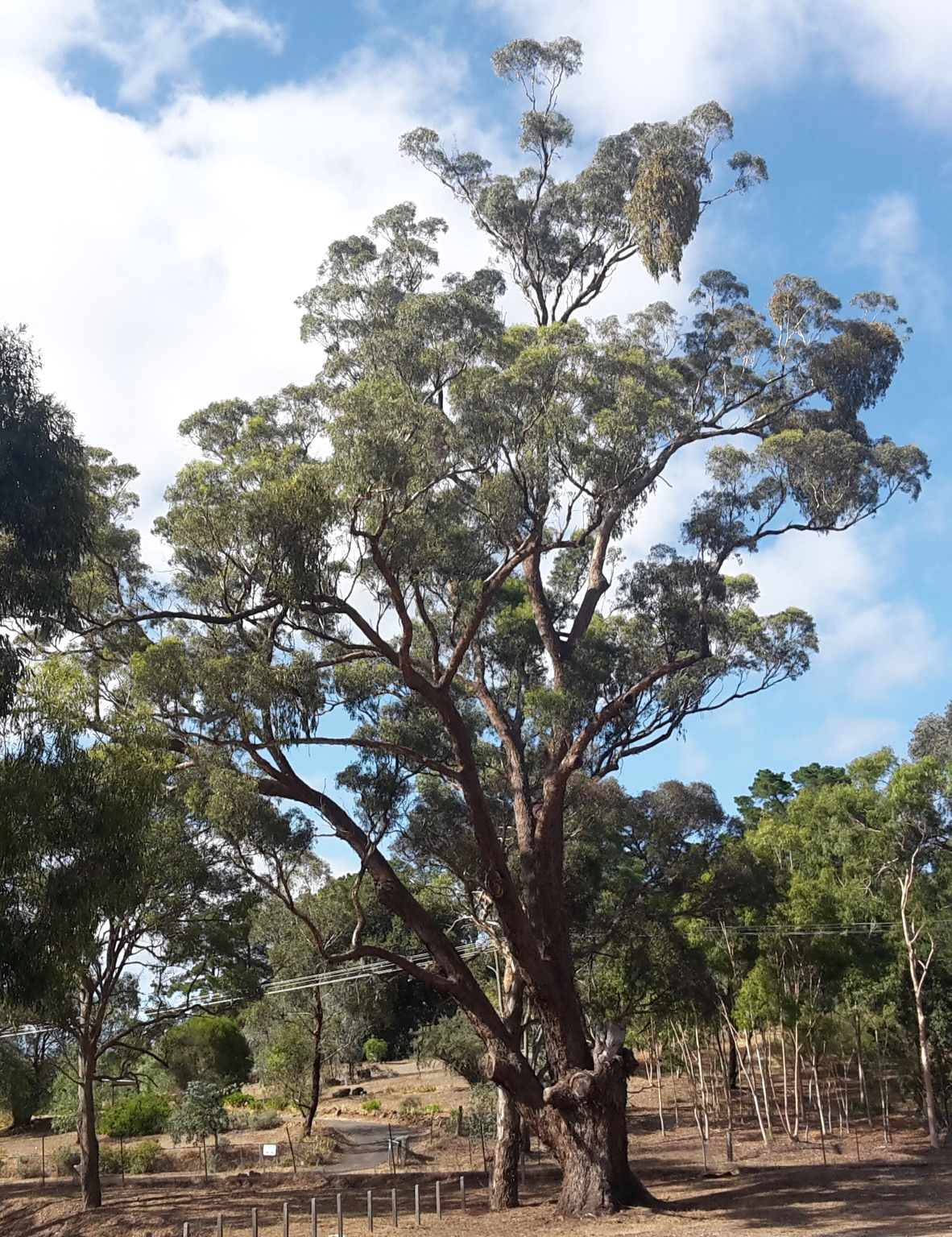
Yellow Box (Eucalyptus melliodora) at Bill Woodfull Reserve, estimated age 530 years (photo by Bev Phillips)
Safe and skilled: Training for local Landcare groups
Posted on 9 May, 2019 by Ivan
In 2017, Connecting Country successfully obtained a grant from the Department of Environment, Land, Water, and Planning to deliver a series of training workshops to the region’s Landcare and other community groups. The aim was to provide practical support to local Landcarers and other community members, and strengthen their groups’ capacity to be safe, self-sufficient and sustainable.
Connecting Country supports and works closely with around 30 Landcare and Friends groups in the Mount Alexander region of central Victoria, as well as many other landholders and volunteers. To enhance the practical support we provide, we have been running free training for Landcare groups, Connecting Country staff and committee, and other community members in governance, financial management, health and safety, and first aid.
This training will enable Connecting Country and our local groups to operate more effectively, follow safe work practices, respond to first aid emergencies, increase robustness of financial management, and improve their organisational practices. Governance training and financial training for committee members of local groups helps them be more efficient, and more aware of relevant government regulations, their accountability and obligations to their members. First aid training gives people the knowledge and confidence to address emergency health situations that may arise during working bees and other events.
Community education is a core activity of Connecting Country, as defined in our Strategic Plan. Annually since 2010, we’ve coordinated a comprehensive program of educational and capacity building events for local landholders, Landcare and Friends groups, staff, committee and the community in general. From a variety of methods (e.g., feedback forms, evaluations, steering group meetings, Landcare Link-up sessions), Landcare groups and their members have made us aware of the types of training and capacity building activities that would be most beneficial.
Participant feedback on the training has been extremely positive. If you are interested in hearing more about future training opportunities, please subscribe to our Enews, or contact Asha Bannon on 5472 1594 or asha@connectingcountry.org.au
Reconciliation Week – 26 May to 2 June 2019
Posted on 9 May, 2019 by Ivan
National Reconciliation Week 2019 is part of the Reconciliation Movement’s efforts to support Australians in making progress on the Five Dimensions required to achieve reconciliation. Each year the theme engages with one of the Five Dimensions.
This year’s theme focuses on building positive race relations: ‘Grounded in Truth, Walk Together with Courage’.
There are some great local events happening around Castlemaine, involving one of Connecting Country’s local partners – Nalderun. Details are provided in the poster below.
Conserving the Turquoise Parrot – talk on 10 May 2019
Posted on 9 May, 2019 by Ivan
Castlemaine Field Naturalists Club have a very special speaker for their May 2019 General Meeting.
The Turquoise Parrot – conservation successes in north east Victoria
Speaker: Chris Tzaros, wildlife ecologist, photographer and author of ‘Wildlife of the Box Ironbark Country’ book
When: 7.30 pm on Friday 10 May 2019
Where: Uniting Church Hall, behind the Uniting Church on Lyttleton St, Castlemaine VIC (next to Castlemaine Art Museum)
Once faced with extinction in the early 1900s, the Turquoise Parrot has made a remarkable comeback and now exists throughout many parts of Victoria, NSW and southern Queensland. Although still listed as threatened, there are some areas where it has established secure localised populations. One such area is the hills of north-east Victoria, where a campaign to address key threats and improve the species’ habitat has been operating for about six years.
Community involvement has been instrumental to the programs success, with private landholders actively participating in a raft of activities that will hopefully allow this spectacular little bird to enjoy a bright future. This is an inspiring conservation success story that provides hope for other conservation initiatives.
The talk is open to both members and visitors – bring along friends and family. Tea and snacks available afterwards. There is no cost for attendance.
For more information please contact Castlemaine Field Naturalists Club – click here

Conserving the Turquoise Parrot (photo by Chris Tzaros)
Mother nature – plant a tree for Mum this Mother’s Day
Posted on 7 May, 2019 by Asha
Along Forest Creek, Castlemaine, a transformation is taking place. Two years ago, the state government removed a large area of poplar trees, just down from Patterson Bridge on Duke Street, to make way for native species and encourage wildlife back to the area. Last year, Castlemaine Landcare Group, with help from many fantastic volunteers, planted 1,500 plants – trees, shrubs, grasses and sedges. Despite dry weather, their growth has been dramatic.
This Mother’s Day, they want to plant more! A mammoth planting event is planned for Sunday 12 May at 9.30 am at the former poplars site, where Duke Street crosses Forest Creek. Anyone and everyone is invited to come down to plant, celebrate Mother’s Day, and share a cup of tea or coffee.
Castlemaine Landcare would love to see this area restored for the community to use and to increase local biodiversity. Come and see the difference a year makes and how you can help – bring your Mum, kids, family and friends!
Please wear stout footwear and gardening gloves. The ground is rough and there are some hazards like old blackberry brambles, tree stumps and roots. Morning tea will be provided.
Where: Forest Creek at Patterson Bridge on Duke Street (near Happy Valley Road intersection) Castlemaine VIC
When: 9:30 am to 12 noon on Sunday 12 May 2019
Parking: Limited parking is available on Happy Valley Road, or park on Duke Street (near Best Motors) and walk 200 m to the planting area
More information: Please email Christine at christinekilmartin01@gmail.com

Frankie Cook is looking forward to planting a tree for mum along Forest Creek (photo from Castlemaine Landcare)
